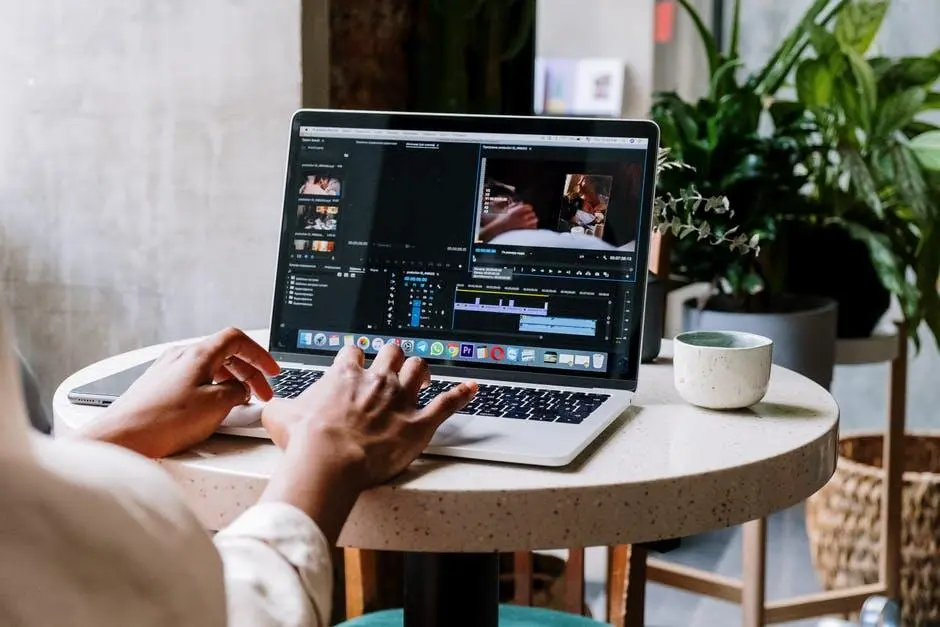Ever wondered how some photos look so sharp and eye-catching while others feel flat?
Mastering image editing doesn’t have to be hard. With the right tips, anyone can make photos brighter, cleaner, and more fun to look at. Learning simple tricks can help you fix colors, remove mistakes, and make images tell a better story.
Even beginners can create pictures that stand out online, in school projects, or for hobbies. Ready to turn ordinary pictures into something amazing? Let’s dive in and start learning the easiest ways to edit like a pro.
Start with Good Photos
A clear, sharp photo makes editing much easier and faster. Photos taken in good light and with steady hands often need fewer fixes later. Bright, natural lighting brings out details and colors that look best on any screen.
Avoid blurry or dark pictures, as they can make even small edits tricky. Choosing the right angle can highlight the main subject and keep the image balanced. Simple backgrounds can also help your subject stand out more clearly.
Taking a little extra time to get a strong starting photo means less work later and better results overall. This way, images can look clean and polished even without a background remover.
Learn to Crop
Cropping makes the main part of a photo stand out and removes extra space that can be distracting. It can make a picture look cleaner and more balanced. Moving the edges a little can help people focus on what is most important.
Cropping also helps change the size of a photo to fit squares, rectangles, or tall shapes. Cutting out parts you don’t need makes the photo look better and clearer.
Practicing cropping can make pictures look nicer and more eye-catching. This simple trick is very helpful for pictures shared online, especially on social media.
Adjust Brightness and Contrast
Changing the brightness and contrast can make a photo look clearer and more alive. Brightness makes the picture lighter or darker, while contrast helps the dark and light parts stand out more.
Small changes can make details easier to see and make the image look more real. Too much change can make the photo look strange, so it is best to adjust little by little.
This helps the subject of the picture become more noticeable and the overall image more pleasant to look at. Learning how to adjust brightness and contrast gives more control over how a photo feels and looks, making it easier to create strong, eye-catching images every time.
Use Filters Sparingly
Too many filters can make an image look fake or heavy. A filter should only enhance the mood, not completely change the picture. Beginners often add strong effects, but this can hide the natural details that make a photo interesting.
A soft touch usually works better, letting the subject stand out without distraction. Try lighter tones, subtle warmth, or a gentle cool shade instead of extreme settings. This way, the picture keeps its original charm while still looking polished.
Think of filters as seasoning in food-just enough can make it better, but too much can spoil it. With practice, you’ll learn which filters highlight the beauty of your shot and which ones take away from it.
Fix Colors
Colors set the mood of an image and give it life. If the tones are too dull, the picture may feel flat, while overly strong shades can look harsh. Balancing them helps create a natural and pleasing result.
Beginners can start by noticing if skin tones look too red, green, or pale, then making small changes until they appear true. Shadows and highlights should also look balanced, so details remain clear without being lost.
Soft adjustments often work better than heavy changes, as they keep the photo looking real. Learning how colors affect the overall mood makes editing smoother and more creative. With steady practice, color fixing becomes an easy way to make any picture more vivid and appealing.
Remove Blemishes or Mistakes
Small marks or unwanted spots can draw attention away from the main subject of a picture. Cleaning them up helps the viewer focus on what truly matters. Tools like the clone or healing brush make this task simple, allowing rough edges or tiny flaws to blend smoothly with the rest of the image.
Even dust on a lens or an accidental scratch can be corrected with care. The key is to keep changes natural, so the photo still looks real and not overly edited.
By carefully removing only what distracts, beginners can make their images cleaner and more polished. Over time, this habit builds sharper attention to detail and helps create photos that feel neat and pleasing to the eye.
Sharpen Your Image
Clear details make a picture look better and easier to see. Sometimes photos look a little soft or blurry, but sharpening tools can help fix this. They make the edges of objects stand out and show small parts like hair, fabric, or grass more clearly.
It is best to use only a little sharpening at a time. Too much can make the photo look rough or fake. Beginners can try sharpening the main subject, like eyes or important objects, while keeping the background softer.
This makes the picture feel more real and balanced. With practice, sharpening becomes simple and helps turn an ordinary photo into one that looks neat, sharp, and full of life.
Add Text or Simple Effects
Words and light effects can give extra meaning to a picture. A short line of text can explain what the photo is about or add a personal touch. Fonts should be clear and easy to read so they do not take away from the image itself.
Effects, like soft light, shadows, or a gentle glow, can make the photo feel more alive without changing it too much. Beginners should keep things simple and avoid using too many styles at once.
A balanced mix of photo and design makes the image look neat and pleasing. With practice, adding text or small effects becomes an easy way to share a message and make pictures more interesting to look at.
Bringing Your Edits Together
Image editing does not need to be hard. By learning simple steps and using tools with care, beginners can make photos look clear, balanced, and pleasing. With steady practice, every edit builds skill and confidence, turning ordinary shots into images that tell stories in a natural way.
Did you find this article helpful? You can check out our website for more awesome content like this!
Also Read-Future Trends in Emergency Vehicle Technology










